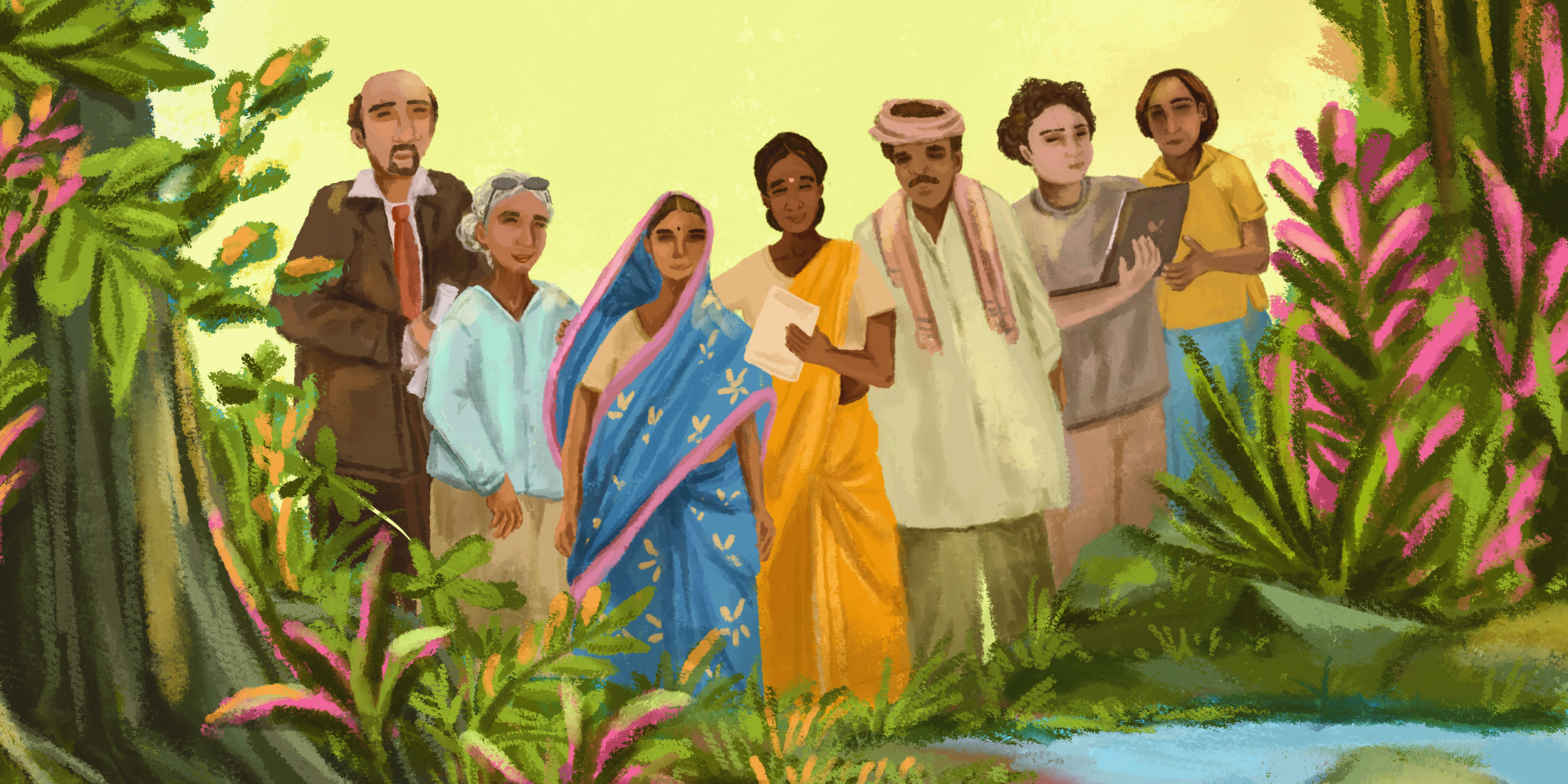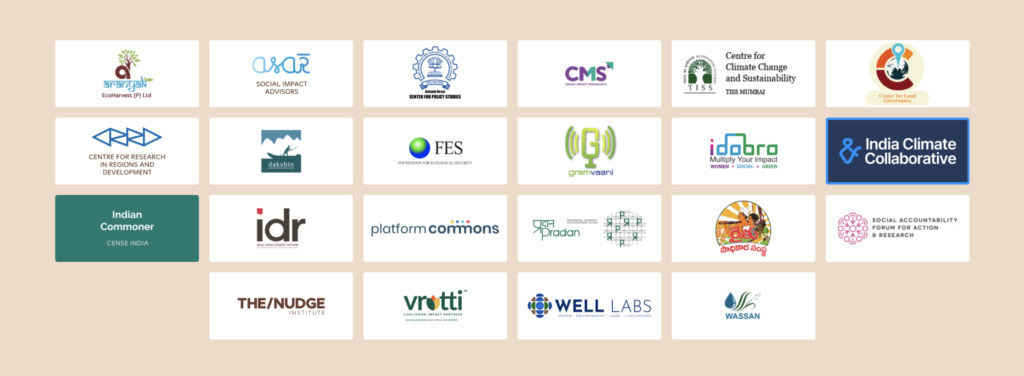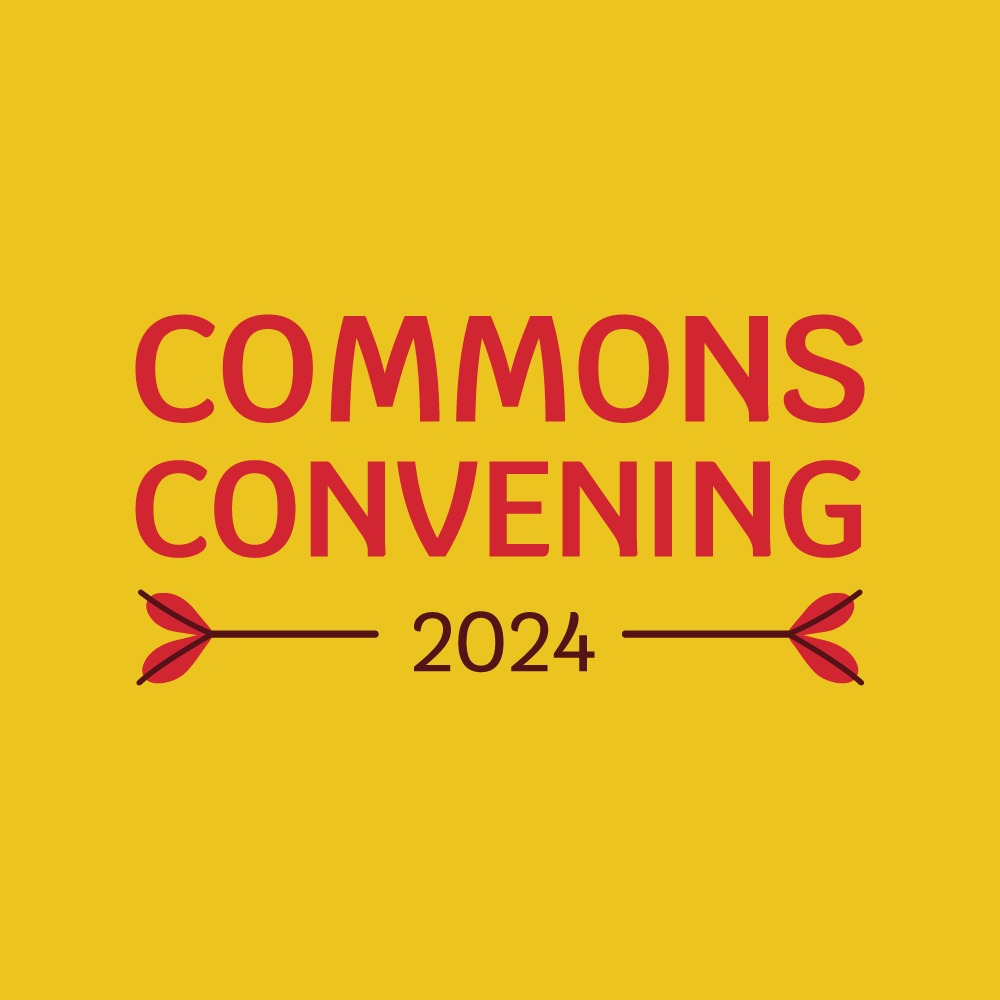Common Ground, a coalition of over 20 organisations, is dedicated to addressing the right questions to tackle challenges related to community-managed resources, equitable access, and the collective stewardship of commons in the face of climate change.

Collaborative efforts have often been the driving force behind transformative changes, moulding and shaping civilisations—mostly for the better. Whether sociological, ecological, or environmental, humans have consistently discovered valuable solutions through cooperation and cocreation, particularly in areas impacting their agency, livelihood, and quality of life.
Despite growing commitments to climate action, forest restoration, biodiversity conservation, and rural livelihoods, progress remains slow. Communities relying on marginal resource systems face heightened vulnerabilities, increasing risks of conflict and displacement.
In India, 205 million acres (about the area of Egypt), roughly a quarter of the landmass, are comprised of community forests, pastures, and water bodies. Commons support over 350 million rural people and provide ecosystem services valued at over USD 90 billion (approximately Rs. 7.5 lakh crore) annually. Unfortunately, these resources are rapidly degrading at a rate of 4% per year.
The degradation of commons deeply impacts the rural economy, disconnecting people from their livelihoods and cultural connections to these resources. Tribal populations, who have strong cultural and economic links to forests and common lands, along with other marginalised sections of the rural population such as scheduled castes and women, are disproportionately affected by this degradation. As commons and self-governance institutions decline, the rural landscape suffers socially, ecologically, and economically, with far-reaching consequences for all.
While common pool resources are one aspect, equally important are common property regimes that strengthen local democracies through locally evolved self-regulation. In tribal areas, this has been customary. Nobel Laureate Elinor Ostrom’s work emphasizes that commons are self-regulating systems where local rules enhance democratic functions. Ostrom’s research counters the belief that village communities need government intervention to sustainably govern and regulate common pool resources, showing they can self-regulate with the right conditions. This self-regulation is vital for inclusion and representation in grassroots democracies, particularly where traditional practices govern resource management. Neglecting these principles weakens micro-level democracies, highlighting the need to maintain these systems for effective local and socio-ecological governance.
In India, policymakers recognised the role of communities in natural resource stewardship through the Joint Forest Management (JFM) program, initially implemented via executive order. JFM marked a policy shift by involving local communities in forest conservation and management. This was reinforced by the 2006 Forest Rights Act, which constitutionally recognises Community Forest Rights. This legislation highlighted the pivotal role of local communities in resource management. Similar advancements in the Panchayati Acts concerning non-forest commons led to formal recognition of grazing lands and other resources in states such as Rajasthan, Karnataka, Gujarat, Madhya Pradesh, Maharashtra and others. Enabling provisions in these acts ensured better management and recognition of these resources, reinforcing the importance of community involvement in protection and preservation of commons.
Despite such efforts, the deterioration of commons persists at an alarming rate, impacting the rural economy, ecology and cultural heritage. The involvement of local communities in resource management is crucial, but solutions require continuous support and recognition of their rights. Effective governance of common resources hinges on community-driven efforts and the reinforcement of traditional practices.
Thus, the need of the hour is Collaborative Action.
The Genesis of Common Ground
Over a decade ago in Rajasthan, western India, a group of researchers and civil society leaders initiated a small project to address severe drought by bringing together various actors. While the overarching concern was livestock and fodder, veterinary services focused on disease control and improving livestock productivity through artificial insemination. The milk union saw an opportunity to enhance milk procurement from previously uncovered areas. Civil society organisations were concerned about local livestock breeds and fodder availability, while cooperatives focused on increasing fodder and water supply, as well as employment guarantee rights.
Recognising the need for a comprehensive and impactful approach, these actors decided to work together. This led to collective action between civil society NGOs, milk unions, and government actors, marking the beginning of a collaborative journey to address shared challenges that years later culminated in the creation of the Common Ground initiative. From there on like-minded individuals and organisations began connecting and deliberating the need to strengthen the capabilities of civil society, government, and businesses to collaborate in system-level change for resilient social, ecological, and economic outcomes.
Values and Vision
The Common Ground initiative was conceived by a group of organisations working on environment, ecology, and livelihoods, who recognised that the scale and complexity of the issue required a collaborative effort. It seeks to address crises in livelihoods, climate, and social equality by engaging with commonly faced bottlenecks and leveraging opportunities. By catalysing, convening, and connecting actors, the initiative aims to build networks, processes, and knowledge systems necessary for communities to shape their futures. This approach embodies the ‘Samaj, Sarkar, Bazaar’ framework, involving the collaborative efforts of society, government, and markets to effectively address multifaceted challenges.

Two core values were identified in envisioning Common Ground. The first is creating a big tent action for Commons, emphasising distributed leadership and plurality of approaches, which means holding space for dialogue and alignment and synergy even in the absence of full agreement. The second is convergence or at least coordinated action. Significant improvements require collaboration and the integration of efforts from key decision makers, on-ground communities, civil society and businesses, moving away from siloed approaches. It’s crucial to create spaces where organisations, decision-makers, market players, practitioners, communicators, and data providers can come together to discuss, debate, and identify ways for shared value creation. This collaboration unlocks new energies for transformative work, allowing significant advancements in addressing the commons through a shared vision of improving socio-ecological outcomes.
A collaborative action framework was developed to address issues comprehensively. Different actors, such as those focused on social justice, conservation, and economic and livelihood opportunities, came together to develop a shared and integrated vision for people and nature outcomes centering people’s agency and thriving commons. A diagnosis among 23 leading organisations in the field identified barriers such as the erosion of local community agency, the gap between policy and practice, and market behaviours that did not respect the needs of local communities. While the pace and scale of such crises are alarming, government capacity, private sector incentives, technological reach to the ‘first mile, and civil society influence are each insufficient to catalyse the change required. This shared understanding led to the conception of a network of actors guided by a shared vision, characterised by distributed leadership and a plurality of context-specific approaches.
Nurturing the Seed of Collaboration
The inception and design of Common Ground are attributed to the unwavering support of its partners, who recognised this initiative’s vital necessity. They actively participated in many rounds of dialogues and consultations, offering invaluable insights and constructive feedback throughout the process. Their contributions were instrumental, blending foresight with practical input, and ensuring the initiative was well-grounded and visionary.
The initial consultations focused on understanding the problem, identifying root causes, and uncovering systemic barriers affecting the vitality of the Commons and rural communities. Participants worked collaboratively to diagnose these issues and explore systemic solutions. This process shaped the direction and objectives of Common Ground, ensuring it addresses the real needs and challenges of communities; while drawing on the experience of some of those involved in the systems change analysis from the Promise of Commons initiative.
Now, as the initiative moves into the implementation phase, it faces exciting challenges of navigating in building infrastructure for collaboration, co-creation, shared learning, and constant re-iteration of approaches based on evidence within the network. A primary goal for this phase is to ensure that the collaborative efforts lead to specific, visible outcomes in targeted geographies, while also creating knowledge, processes, and relationships that can take this impact to population scale across the country.
A learning and adaptation mindset that tracks ‘what’s working and what’s not’ is critical for unfolding all the strategies and pathways and demonstrating impact. It’s not just about working together; it’s about making the collaboration tangible and impactful where it matters most. It also involves strengthening the capabilities and capacities of the actors in the ecosystem.
The first five years focus on fixing the ropes (establishing a strong foundation), where a portion of the population reaches the ‘summit’ (achieving significant milestones), and a sizeable group reaches the base camp (making substantial progress). Eventually, everyone else will also make their way to the summit.
Laying Out the Path Ahead
As the collaborative is gathering pace, the aim is to make Commons central to rural development and environmental governance, with an emphasis on reinforcing women’s agency. A parallel process is to align policy, practice, and financial flows to support ecologically sound and gender-equitable rural development. Additionally, it aims to reorient incentives and open market opportunities to favour resilient, gender-equitable rural livelihoods. Finally, the collective intends to build responsive social infrastructure to support alignment across actors working on rural development.
Common Ground is sounding a clarion call for “all-hands-on-deck,” striving to empower nature and people—especially women, tribal groups, and the rural poor—to reclaim their lands, champion their futures, and author their stories.
This blog is the first in a three-part series, focusing on the genesis of Common Ground, with the subsequent blogs exploring developments in the first year and the vision for the future.
